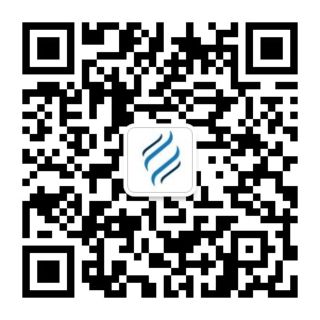Human Tie-2 Protein, Fc Tag
-
产品编号
KMP2248
-
别名
血管生成素-1受体, angiopoietin-1 receptor, CD202b
-
规格
- 50ug
- 100ug
- 200ug
| Alias | 血管生成素-1受体, angiopoietin-1 receptor, CD202b |
| Catalog Number | KMP2248 |
| Product Description | The Human Tie-2 Protein(KMP2248) is produced in HEK293 Cells and the target gene encoding Ala23-Leu748 is expressed with a Fc tag at the C-terminus. |
| Molecular Name | Tie-2 |
| Species | Human |
| Host | HEK293 Cells |
| Size | 50ug, 100ug, 200ug |
| Purity | >95% as determined by SDS-PAGE |
| Purification | Affinity purification |
| Endotoxin | <1.0 EU/ug determined by the LAL method |
| Formulation | PBS, pH7.4 |
| Background | Tie-1/Tie(tyrosine kinase with Ig and EGF homology domains 1) and Tie-2/Tek comprise a receptor tyrosine kinase(RTK) subfamily with unique structural characteristics: two immunoglobulin-like domains flanking three epidermal growth factor(EGF)-like domains and followed by three fibronectin type III-like repeats in the extracellular region and a split tyrosine kinase domain in the cytoplasmic region. These receptors are expressed primarily on endothelial and hematopoietic progenitor cells and play critical roles in angiogenesis, vasculogenesis and hematopoiesis. Human Tie-2 cDNA encodes a 1124 amino acid(aa) residue precursor protein with an 18 residue putative signal peptide, a 727 residue extracellular domain and a 354 residue cytoplasmic domain. Two ligands, angiopoietin-1(Ang-1) and angiopoietin-2(Ang-2), which bind Tie-2 with high-affinity have been identified. Ang-2 has been reported to act as an antagonist for Ang-1. Mice engineered to overexpress Ang-2 or to lack Ang-1 or Tie-2 display similar angiogenesis defects. |
| Predicted Molecular Weight | 81.03 kDa |
| Storage Condition | Aliquot and store at -20℃ to -80℃. Avoid repeated freezing and thawing cycles. |
| Shipping Condition | In general, the proteins are provided as lyophilized powder which are shipped at ambient temperature. They are shipped out in dry ice if supplied in liquid form. |
| Uniprot ID | Q02763 |
| References | 1.Blood 102:2482-2490 (2003) 2.J. Biol. Chem. 279:13224-13233 (2004) 3.FASEB J. 18:1200-1208 (2004) 4.J. Cell Biol. 169:239-243 (2005) 5.Histol. Histopathol. 23:773-780 (2008) 6.Nat. Cell Biol. 10:513-526 (2008) 7.Circ. Res. 92:630-636 (2003) 8.J. Med. Chem. 50:611-626 (2007) |
| Function | Tyrosine-protein kinase that acts as cell-surface receptor for ANGPT1, ANGPT2 and ANGPT4 and regulates angiogenesis, endothelial cell survival, proliferation, migration, adhesion and cell spreading, reorganization of the actin cytoskeleton, but also maintenance of vascular quiescence. Has anti-inflammatory effects by preventing the leakage of pro-inflammatory plasma proteins and leukocytes from blood vessels. Required for normal angiogenesis and heart development during embryogenesis. Required for post-natal hematopoiesis. After birth, activates or inhibits angiogenesis, depending on the context. Inhibits angiogenesis and promotes vascular stability in quiescent vessels, where endothelial cells have tight contacts. In quiescent vessels, ANGPT1 oligomers recruit TEK to cell-cell contacts, forming complexes with TEK molecules from adjoining cells, and this leads to preferential activation of phosphatidylinositol 3-kinase and the AKT1 signaling cascades. In migrating endothelial cells that lack cell-cell adhesions, ANGT1 recruits TEK to contacts with the extracellular matrix, leading to the formation of focal adhesion complexes, activation of PTK2/FAK and of the downstream kinases MAPK1/ERK2 and MAPK3/ERK1, and ultimately to the stimulation of sprouting angiogenesis. ANGPT1 signaling triggers receptor dimerization and autophosphorylation at specific tyrosine residues that then serve as binding sites for scaffold proteins and effectors. Signaling is modulated by ANGPT2 that has lower affinity for TEK, can promote TEK autophosphorylation in the absence of ANGPT1, but inhibits ANGPT1-mediated signaling by competing for the same binding site. Signaling is also modulated by formation of heterodimers with TIE1, and by proteolytic processing that gives rise to a soluble TEK extracellular domain. The soluble extracellular domain modulates signaling by functioning as decoy receptor for angiopoietins. TEK phosphorylates DOK2, GRB7, GRB14, PIK3R1; SHC1 and TIE1. ATP + L-tyrosyl-[protein] = ADP + H+ + O-phospho-L-tyrosyl-[protein] Angiopoietin binding leads to receptor dimerization and activation by autophosphorylation at Tyr-992 on the kinase activation loop. Inhibited by staurosporine, K252a, PP2, damnacanthal, SB203580, CEP-11207, CEP-11981 and CE-245677. Inhibited by triazine, thienopyrimidine and thiazolopyrimidine derivatives. |





 0
0
